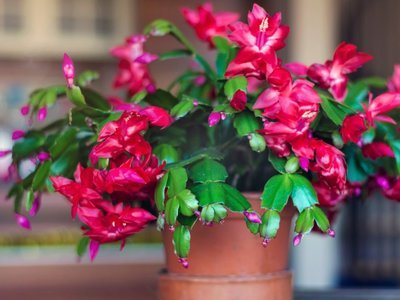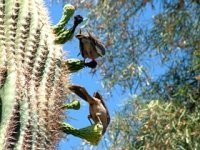Super Spiderworts
Spiderworts belong to the genus Tradescantia, a group of about 71 species of perennial plants native to the New World from southern Canada south to northern Argentina. Some thrive in the cold winters of temperate climates while others call the tropics their home. The genus takes its name from John Tradescant the elder, a 17th century English plant collector and nurseryman.
Spiderworts tend to be weakly upright to scrambling plants, growing some 12 to 30 inches tall, with long, thin leaves. The flowers have three petals and six prominent, usually yellow, anthers. Many of the species bloom in the morning, then close in the afternoon.
The first species described, Tradescantia virginiana or the Virginia spiderwort, is native to the eastern United States from Maine to Alabama and west to Wisconsin and eastern Missouri. In its native habitat, in grows in open wooded slopes and at the edges of woods. This species was introduced to Europe in 1629, where it was immediately cultivated as a garden flower.
In the Garden
Spiderworts readily cross-pollinate, so a number of cultivars and hybrids have evolved and become available. In fact, they'll do that in your own yard, and, over the years, seedlings will grow in a range of shades of purple, blue, lavender, and pink. Among the negative aspects of spiderworts is this tendency to self-sow and spread. Obviously, this can be a good or a bad thing, but the seedlings can be easily pulled up. Older clumps can be easily divided.
Any average, well-drained soil in full sun (preferably with afternoon shade) to full-time partial shade will do. They do grow best in moist, soils, but they are tolerant of poorer, drier soils. The graceful clumps, with arching, iris-like, dark green leaves to 1 foot long and 1 inch wide, bear the flowers in terminal clusters from mid-May to early July. If trimmed back by at least half after flowering, they will often re-bloom later in the summer. Even without this benefit, it pays to trim spiderworts back then to keep the plants from sprawling and looking raggedy. Although young shoots are sometimes susceptible to snail damage, there are no serious insect or disease problems.
Some Varieties To Try
Blue and purple flowers: 'Zwanenberg Blue'; 'Blue Stone'; 'Isis'; 'J. C. Weguelin', a light lavender; and 'Concord Grape', growing only 12 inches tall.
Carmine, red, and pink flowers: 'Red Cloud' and 'Carmine Glow' are magenta-red, while 'Valour', 'Pauline', and 'Charlotte' are a purer pink.
White flowers: 'Snowcap' and 'Innocence' both have large white flowers.
Pastel flowers: 'Osprey' has flowers tinted purple-blue. 'Bilberry Ice' has lavender flowers and 'Pink Chablis' has pink blooms.
Unusual varieties: 'Sweet Kate' has violet-blue flowers, sulfur-yellow stamens, and brilliant gold foliage. Just be sure to remove any "normal" green sprouts that appear. Besides 'Concord Grape', other dwarf varieties include 'Satin Doll', 'Little Doll', and 'Little White Doll'. For distinct blue-green foliage, try 'Concord Grape', 'Red Grape', 'Hawaiian Punch', and 'Perrine's Pink'.
Read more from the National Gardening Association.







